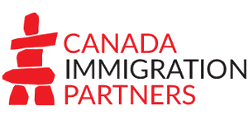Many years ago, on a road trip home to Vancouver from Regina, I stopped at one of the country’s immigration case-processing centres in Vegreville, Alberta. This office closed in 2018, with much of the staff being relocated to Edmonton. Prior to this, it’s where many people wanting to immigrate to Canada would have submitted their applications.
Centralization and ‘cost-cutting’ is nothing new, but AI is presenting novel changes when it comes to case processing efficiencies.
This blog post takes a look at the human side of Canadian immigration case processing. Part 2 will look at its increasing digitization and how a machine is still likely to think like a human as it has been created by one.
The importance, I believe, of this blog post is it highlights the work of a case processing officer and the need for your application to be detailed in how you meet the program requirement and supported with as much evidence and documentation as possible if you want to successfully immigrate to Canada.
Once Upon a Time in the West
The former case-processing centre at Vegreville dealt with Family Sponsorship, Permanent Residency and Temporary Residency applications.
I arrived at 7.30 am. I intended to just drive around the block, but it was such a beautiful morning I thought I’d get out and take some photos. As I did so, the immigration department employees started arriving for work: mainly middle-aged women with their Tim Horton’s coffee cups, replete with ID lanyards around their necks. As I took photos, the centre manager came out and asked if I was press or if I had submitted an application to this Canadian immigration centre. He mentioned that people would drive across the country to find out the status of their Canadian immigration application.
I answered his questions and told him that I was a regulated Canadian immigration consultant, that we (Miho and myself) had applications in process at the centre, and that I was passing by and wanted to take a look at this fabled institution for myself. It’s worth noting at that point in time, we were sending nearly all our applications to Vegreville. This Immigration.ca article does a great job of explaining the work carried out at the centre and how it helped people immigrate to Canada.
Meanwhile, back in Vegreville… Once he [the manager] knew I wasn’t press or a disgruntled client, he invited me in for a tour of the facilities and to see for myself Citizenship and Immigration processing in action. He walked me through the processes involved from start to finish.
A Bureaucratic Journey: How Visa Officers Used to Process Your Immigration Application
The first stop was the mailroom, where all incoming applications were received, date stamped and collected into bundles to be assigned to visa officers.
After seeing the entry point for Canadian immigration applications, we walked through a massive office, lit with overhead neon lights, that was divided into cubicles containing large tables. Visa officers, with glasses perched on their noses, sat with their coffees in front of them, with red pens in hand, ticking, crossing and annotating paper applications that were being cross-referenced for completeness against a checklist.
Because Canadian visa officers have a defined quota of applications they need to process each day, the completeness check is an integral part of how IRCC employees approach their job. It is far quicker to return an incomplete application than to check off numerous complete applications. Therefore, they look for anomalies in order to fulfil their quota. The point of highlighting this is not to discredit visa officers but to underscore the need for applicants to submit complete and accurate applications. This is where we can help.
After this walk-through, we went to his office, drank coffee and talked about the opposite ends of the same industry in which we work. We discussed issues such as program integrity, processing times, and IRCC communications that I can remember.
All told, this tour and conversation lasted less than an hour, but it gave me an invaluable experience into the working of the very system that is Miho’s and my lifeblood.
I share this story for a number of reasons:
- Firstly because of the invaluable insight into the workings of how the Canadian government processes people’s applications to immigrate to Canada.
- Because it underscores the people processing your applications are as human as you and I.
- That attention to detail, evidencing relationships, and submitting information in a timely manner are incredibly important.
- Ultimately, visa officers are looking for reasons to refuse an application, not because it’s personal, but because it helps them achieve their daily work quota.
The advent of AI (artificial intelligence) and machine learning will expedite this process but not replace humanity’s involvement, nor will the portals and online harvesting of information be perfect, nor change the fact your application needs to be complete and decision-ready.
Where online submissions have helped applicants, either by submitting their own applications or through using registered Canadian immigration consultants, is that you cannot submit an incomplete application online, whereas one could be mailed, then returned to you, then resubmitted. All of which added time and money to the process.
In part two, however, we will look at the issues online-only applications have when, for example, you are locked out of your account and are unable to submit information before the deadline.
If you feel that a Canada immigration consultation would be beneficial, get in touch with us.





